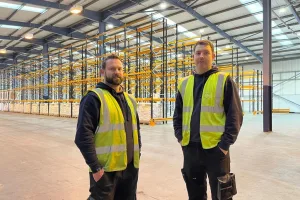England needs more midbox warehouse space
More than six million ft2 of small to midbox space is needed in England every year to satisfy demand according to new research by Potter Space and Savills.

By Liza Helps Property Editor Logistics Matters
THE STARTLING figures come from Potter Space and Savills latest “Big Things in Small Boxes” report. It has noted that there is a 38% gap between the amount of small to Midbox space being provided and actual demand from occupiers. This translates to a shortfall of some 6.2 million ft2 of space in units under 100,000 ft2 per year. In some locations the supressed demand has topped 166% – Crawley in the southeast . While even in the logistics heartlands there is a demand shortfall of more than 100% – 101% for Leicester.
According to Potter Space managing director Jason Rockett: “This suppressed demand has spiralled in recent years for several reasons. Importantly, there has been a focus from the property sector on big box development (>100k ft2) driven by demand and the wider commercial environment. Larger big box developers typically have deeper pockets, can benefit from lower build costs, and achieve better yields than their small to mid-box counterparts [in effect out bidding small to mid box developers for sites].
“Alongside this, Government and local authorities are more focussed on residential development than achieving the right balance of small, mid, and big box warehousing. While both are important, residential and logistics development must be looked at in tandem; currently the scale is tipped too far in favour of the former.
“The result of all of this is suppressed demand, where demand outstrips supply, which stifles the productivity of local economies and hinders growth.”
Around 95% of the industrial and logistics property market operates out of small to mid-box warehousing units, employing around 2.1 million people across England, delivering £124 billion Gross Value Added (GVA) into the economy each year. This is 7% of the total economy in terms of GVA.
Rockett said: “Simply put, there aren’t enough small to mid-box developments being built to meet the current demand levels, let alone the increased demand still to come. This stifles the productivity of local economies and hinders growth.”
There is a solution to the issue: co-location, but said Rockett: “There needs to be a coordinated approach from Government and local authorities to identify opportunities for small to mid-box development alongside other land uses, sectors and business types.
“Co-location of small box schemes alongside big box is a large part of the solution. The responsibility for making this happen lies with local authorities which must think outside the box and seek to understand the benefits that mixed schemes can offer to local economies, workforces, businesses and consumers.
“This will lead to greater opportunities for collaboration between a mix of developers and better utilisation of land available.”
“The planning system should look to unleash the growth of the small to mid-box market, by allocating the right land in the right locations. In some regions and towns, you could more than double the area of smaller warehousing and it would only just meet demand – such is the shortage.”






